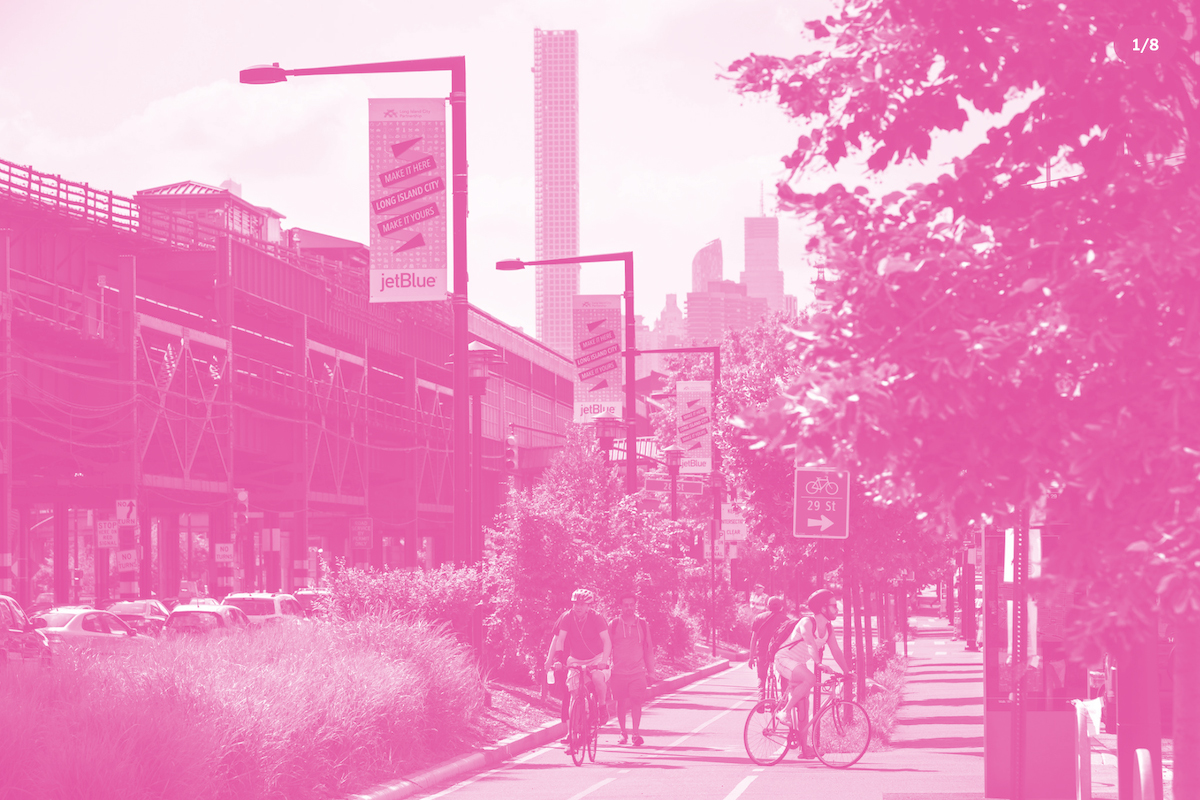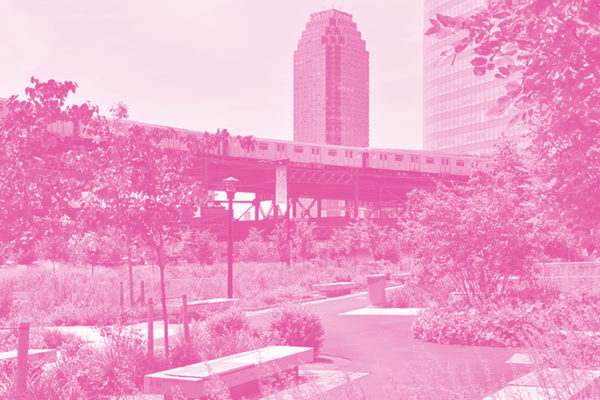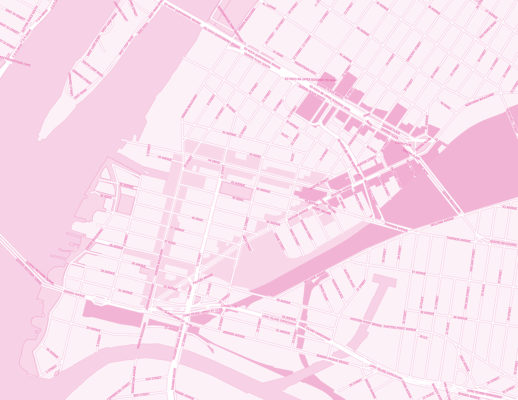
The Urban Design Forum’s 2018 Forefront Fellowship, Shelter for All, addressed the homelessness crisis in New York City by examining how to dignify the shelter system through better design and exploring the root causes of homelessness and housing precarity. Fellows developed original design and policy proposals on how to address the prison-to-shelter pipeline, public bathrooms, public realm management, supportive housing, and racist housing policies, which we are pleased to publish alongside interviews with leading experts.
The following interview with Paul Lotter, Director of BID Field Operations for the Long Island City Partnership, accompanies Homelessness in the Public Realm. Read the full set of Shelter for All proposals and interviews here.
Stella Kim: Could you tell me a little bit about yourself and your current role?
Paul Lotter: I am the Director of BID Field Operations for the Long Island City (LIC) Partnership, where I oversee all operations for LIC BID, from our landscaping and winter lighting programs, to our sanitation and various other programs aimed at improving the streets within the LIC BID. A major part of this role is working with outside agencies on related issues and obstacles.
Before working at the LIC Partnership, I was working at Block by Block for a year and a half overseeing the operations for six Business Improvement Districts within New York City. Prior to that, I was the Precinct Manager at the Cape Town Central City Improvement District, the largest BID in South Africa.
SK: Could you talk more about the spaces the LIC BID oversees?
PL: We don’t have a lot of public spaces that the LIC BID is responsible for managing. The public spaces we manage are the Queens Plaza Greenway and the Dutch Kills Green. We have a contract with the New York City Department of Parks and Recreation for the maintenance of these public spaces, essentially keeping them clean and beautifying the area. If there are any structural issues with the benches or the street lights, that would be something we would attend to.
There are a few other open spaces/green streets within the BID, but we are not the agency responsible for their maintenance/oversight.
The public spaces that we manage are not the kind that you might have in mind, like when you go to the Flatiron District where they have a large median that they’ve turned into a public seating area with food trucks and free Wi-Fi. Our set up is slightly different. A lot of the public space we manage is centered on the bicycle lanes and horticultural beds that accompany it. There are few benches that people can come and make use of during their lunches.

Dutch Kills Green. Image credit: Langan.
SK: How often does the Partnership staff encounter people experiencing homelessness in public spaces and sidewalks within your BID boundary? Are there any effective strategies that the BID employs that others might be willing to try?
PL: When it comes to public spaces and sidewalks within the BID, I have noticed a growing number of homeless people utilizing the space. We also notice a sharp increase in the homeless population mainly during the summer months, when there is an increase in foot traffic. Typically, I will notice them on the busiest sidewalks, where there is a lot of retail activity. Many of the homeless individuals are already known to our partners at Breaking Ground. Some of the strategies that we have employed to assist the homeless population include doing district walks with Breaking Ground to identify the hotspot areas and offer services to those individuals.
Our goal is not to displace anyone, but if there is an activity that is causing a public nuisance or destruction, like public urination and defecation or aggressive panhandling, then typically we would partner with City agencies to see how we can remedy this issue. These activities can negatively affect how our merchants are able to run their businesses.
SK: What has been most challenging about managing these situations? What can help BIDs and other managers of the public realm manage these challenges?
PL: For me, over the years, the biggest challenge I’ve noticed is the willingness of a homeless individual to accept the services available to them. A lot of people experiencing homelessness don’t want assistance. They are perfectly happy with their lifestyle. Getting them reintegrated back into society is a real challenge.
Another challenge is also education within the public realm. It is something that needs inputs from various city organizations to effectively address this growing problem. Everyone should get involved at some point if they can.
SK: In addition to the services that you already are utilizing and the relationships that you have, is there anyone else that can help? Or any specific recommendations you would put forth to the City that would be helpful?
PL: Research and education around this whole topic, similar to the work that you’re doing right now to come up with recommendations and publications on the whole topic of homelessness. Not only to BIDs, but to everyone. Most businesses are in urban areas. If you work in a downtown, chances are you pass someone that’s homeless or someone that’s in need. This kind of information—what to do or how to handle the situation or who to call—is something that is not out there yet. Or if it is, not a lot of people know about it.

BID map. Image credit: Long Island City Partnership.
SK: What does a more compassionate management of the public realm look like to you?
PL: A public space that is open and accessible to all people. An area or a community where there is sufficient services available to people that are in need. That is compassionate management of the public realm.
SK: What will it take for public spaces to be truly for all? We’re probing all the experts in public space management for your dream ideas.
PL: Dream ideas…well, more public restrooms, certainly, there is a big need for that. If you live on the street, where do you go? Restaurants can’t be seen as the main provider of bathrooms to people living on the street – the City needs to come up with real ways to solve this problem.
More open spaces for families and kids to be able to play and exercise. Perhaps more water features during the summer months. Living in an urban area, it’s important to have those spaces available to make it more inviting for its people.
Having sufficient wayfinding maps and information boards would be helpful to visitors and newcomers to an area.
You also have to make it accessible to the elderly and people with disabilities. When you say public space for all, that includes the homeless population, your average Joe walking down the street, visitors to the area and those that live there.
SK: This is a great list. It takes different kinds of amenities and features that will reach certain segments of the population, and will combine to create a truly great space.
Paul Lotter is the Director of BID Field Operations for Long Island City Partnership. He budgetary oversees the BID’s $1 million annual budget, as well as various contracts with city and private agencies, and facilitates with relevant city and state agencies and officials to maintain the highest quality conditions in the area. Prior to that, Lotter was the Operation Manager of Block by Block and the Precinct Manager of Urban Management Department for Cape Town Central City Improvement District.
Header image credit: Mark Kauzlarich/The New York Times